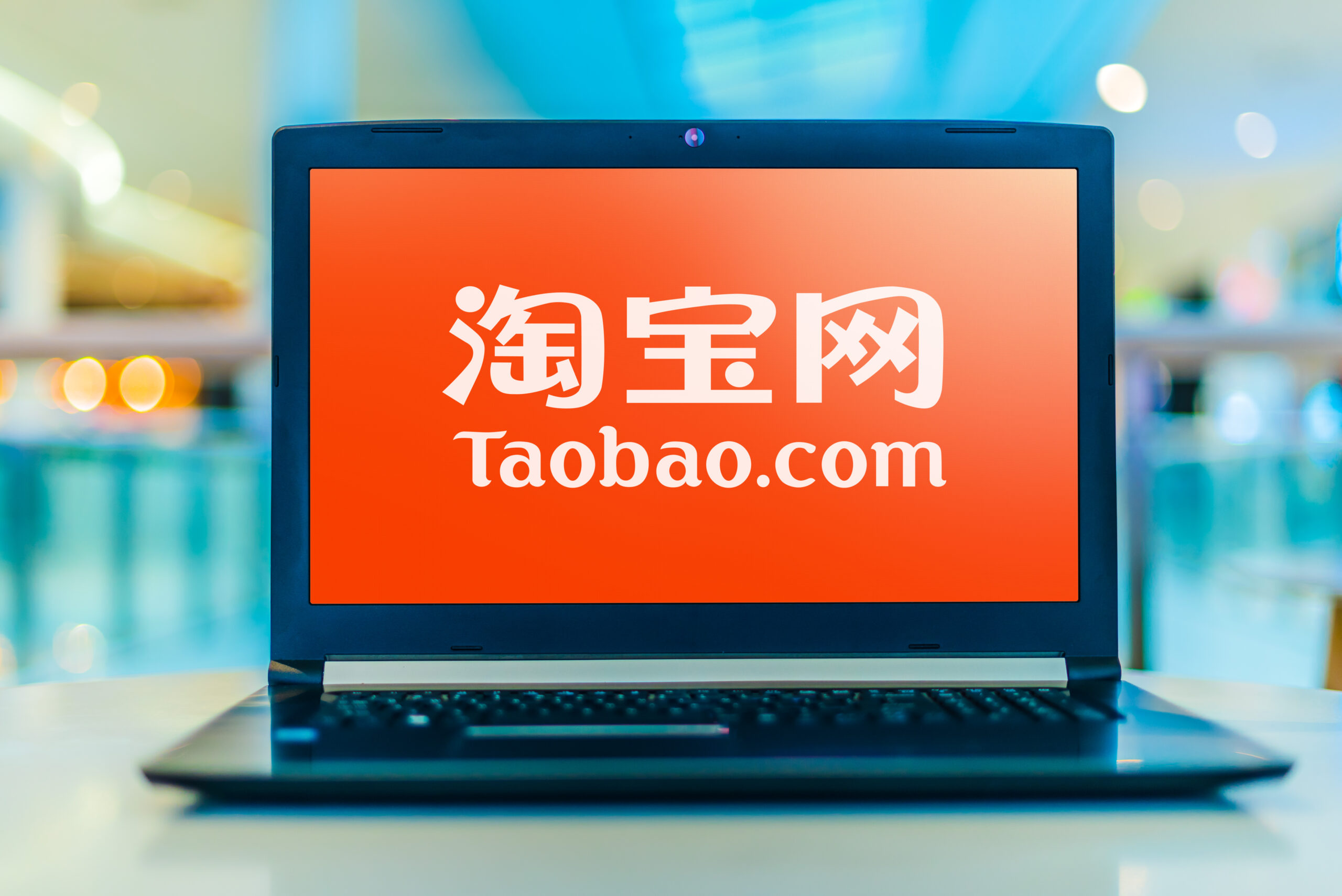As you navigate the ever-changing landscape of global commerce, a surprising trend has emerged in the wake of recent U.S. tariff increases on Chinese goods. Contrary to expectations, these measures have not deterred American consumers from purchasing Chinese products. Instead, they have sparked a surge in popularity for Chinese shopping apps, with Alibaba’s Taobao leading the charge. This shift in consumer behavior reflects a growing willingness among U.S. shoppers to bypass traditional retail channels and source products directly from overseas vendors. The phenomenon raises intriguing questions about the efficacy of trade policies and the adaptability of modern consumers in an interconnected global marketplace.
The Rise of Taobao: How Tariffs Pushed US Shoppers to Chinese Apps

Unintended Consequences of Trade Policy
When the Trump administration announced steep tariffs on Chinese imports, few anticipated the surge in popularity of Chinese shopping apps among American consumers. Rather than deterring purchases from China, these tariffs inadvertently drove cost-conscious shoppers to seek out alternatives. Taobao, Alibaba’s e-commerce platform, emerged as a surprising beneficiary of this shift in consumer behavior.
The TikTok Effect
Social media, particularly TikTok, played a crucial role in Taobao’s ascent. Influencers and savvy shoppers began showcasing “dupes” – affordable imitations of popular products – found on Chinese platforms. These viral videos acted as free marketing for Taobao and similar apps, introducing millions of Americans to a world of budget-friendly alternatives.
Changing Shopping Habits
As Taobao climbed the ranks in both Apple’s App Store and Google Play, it signaled a broader transformation in US shopping habits. Consumers, faced with rising prices at home, began to bypass traditional retailers and import directly from overseas. This trend not only challenges the effectiveness of tariffs but also raises questions about the long-term impact on domestic retail markets and US-China trade relations.
Taobao’s Surprise Surge: Ranking Among Top US Shopping Apps
Unprecedented Rise in App Store Rankings
Taobao’s meteoric ascent in the U.S. app marketplace has caught many by surprise. The Chinese e-commerce giant’s mobile application has skyrocketed into the top five shopping apps on both Apple’s App Store and Google Play. This remarkable climb represents a significant shift in American consumer behavior, as shoppers increasingly turn to international platforms for their purchasing needs.
Factors Driving Taobao’s Popularity
Several key elements have contributed to Taobao’s sudden popularity among U.S. consumers. The implementation of hefty tariffs on Chinese imports has paradoxically spurred interest in direct-from-China shopping options. Additionally, social media platforms like TikTok have played a crucial role in popularizing budget-friendly alternatives or “dupes” found on Chinese e-commerce sites.
Implications for the U.S. Retail Landscape
Taobao’s surge in popularity signals a potential paradigm shift in American shopping habits. As consumers bypass traditional retailers in favor of overseas platforms, questions arise about the long-term impact on domestic businesses. This trend also challenges the effectiveness of trade policies aimed at reducing reliance on Chinese goods, as digital marketplaces blur geographical boundaries in commerce.
TikTok’s Role: How Budget-Friendly “Dupes” Fueled Taobao’s Growth
The Rise of “Dupe” Culture
TikTok has become a powerful catalyst for Taobao’s surge in popularity among U.S. consumers. The platform’s short-form video format has proven ideal for showcasing budget-friendly alternatives to popular products, commonly known as “dupes.” These videos, often created by savvy shoppers and influencers, highlight the striking similarities between high-end items and their more affordable counterparts found on Chinese e-commerce sites like Taobao.
Viral Video Impact
The viral nature of TikTok content has amplified the reach of these “dupe” recommendations. Users share their finds using hashtags like #TaobaoHaul or #ChinaHaul, creating a ripple effect that exposes millions of viewers to the potential savings offered by Chinese shopping apps. This word-of-mouth marketing has proven more effective than traditional advertising, as consumers trust peer recommendations and real-life demonstrations.
Shifting Consumer Behavior
As a result of this TikTok-driven trend, American shoppers are increasingly bypassing local retailers and turning directly to Chinese platforms. The allure of significant cost savings, coupled with the ease of finding specific “dupes” through TikTok tutorials, has transformed how many approach online shopping. This shift not only benefits Taobao but also other Chinese e-commerce apps, creating a new ecosystem of cross-border consumer behavior that challenges traditional retail models and tariff strategies.
Bypassing Local Retailers: The Shift in American Shopping Habits
Direct-to-Consumer Revolution
As tariffs drive up prices on Chinese imports, savvy American consumers are finding innovative ways to circumvent traditional retail channels. You’re witnessing a seismic shift in shopping behavior, with more buyers turning directly to Chinese e-commerce platforms like Taobao. This trend represents a significant departure from conventional purchasing patterns, effectively cutting out the middleman and accessing products at their source.
The Appeal of Chinese Shopping Apps
What’s drawing you to these platforms? It’s not just about dodging tariffs. Chinese shopping apps offer a unique blend of competitive pricing, vast product selection, and often, faster shipping times than domestic alternatives. You’re discovering that items once considered luxury or out of reach are now accessible at a fraction of the cost, thanks to direct connections with Chinese manufacturers and sellers.
Implications for the U.S. Retail Landscape
This pivot in consumer behavior poses challenges for local retailers. You’re part of a growing trend that’s reshaping the U.S. retail ecosystem. As more Americans embrace cross-border e-commerce, traditional stores face pressure to adapt or risk obsolescence. This shift underscores the need for domestic businesses to reevaluate their value propositions and perhaps even consider tapping into the same direct-from-China supply chains that are captivating cost-conscious shoppers.
Tariffs vs. Chinese Influence: The Unexpected Effectiveness Debate
Unintended Consequences of Trade Policies
When the Trump administration imposed steep tariffs on Chinese imports, the goal was clear: reduce America’s reliance on Chinese goods and bolster domestic manufacturing. However, the reality has proven more complex. Instead of turning away from Chinese products, many U.S. consumers have sought alternative channels to access them, inadvertently increasing China’s economic influence.
The Rise of Direct-to-Consumer Chinese Platforms
Taobao’s surge in popularity exemplifies how tariffs can backfire. By making Chinese goods more expensive through traditional retail channels, the policy has driven price-conscious shoppers to explore direct-to-consumer platforms. This shift not only circumvents tariffs but also establishes a more direct link between Chinese sellers and American buyers.
Long-term Implications for U.S.-China Economic Relations
The effectiveness of tariffs in curbing Chinese influence is now under scrutiny. As apps like Taobao become integrated into U.S. consumer habits, they create a new paradigm in cross-border commerce. This trend challenges policymakers to reconsider strategies for managing economic relationships with China, balancing protectionist measures with the realities of a globally connected marketplace.
Summary of Findings
As you navigate the shifting global commerce landscape, Taobao’s popularity surge shows more than a temporary trend. It reveals a fundamental shift in consumer behavior. Economic pressures and advancing technology now drive this change. Meanwhile, the long-term effects of this shift are still uncertain. However, the interaction between government policy and market forces produces unexpected outcomes. As tariffs change and global relations evolve, staying informed becomes essential. This is true for both consumers and businesses. Moreover, the rise of Chinese shopping apps in the U.S. highlights our global economy’s deep interconnectedness. It also shows how consumer choices shape trade dynamics worldwide.
More Stories
Threads Unveils Native DM Test to Break Instagram Dependency
By unveiling a native DM (direct messaging) feature, Threads aims to sever its dependency on Instagram for private communications, a shift poised to redefine how users interact within the platform.
Google Closes Loophole That Let Hackers Bruteforce Your Hidden Phone Number
Recently, Google took decisive action to close a significant vulnerability that could potentially expose users’ hidden phone numbers to malicious actors.
Instagram Edits Brings In-App Teleprompter to Boost Creator Confidence
Introducing the in-app teleprompter within Instagram Edits, a tool designed to bolster your on-camera confidence and enhance viewer engagement.
Minimal-Data Optimization for Search Agent Training in RAG Systems
In the fast-changing world of RAG systems, training search agents with minimal-data optimization is a key challenge.
Southern Cross NEXT Lights Up Pacific with Ultra‑Low‑Latency High‑Capacity Cable
The Southern Cross NEXT (SX NEXT) submarine cable emerges as a pivotal innovation, redefining digital landscapes across the Pacific. Officially operational since July 2022, this 15,857 km four-fiber-pair marvel links Los Angeles and Sydney, with crucial connections to Auckland, Fiji, Tokelau, and Kiribati.
Starlink and OneWeb Gear Up to Transform South Korea’s Telecom Terrain
South Korea is entering the low Earth orbit (LEO) satellite communications field with strong government support for SpaceX’s Starlink & Eutelsat OneWeb.


